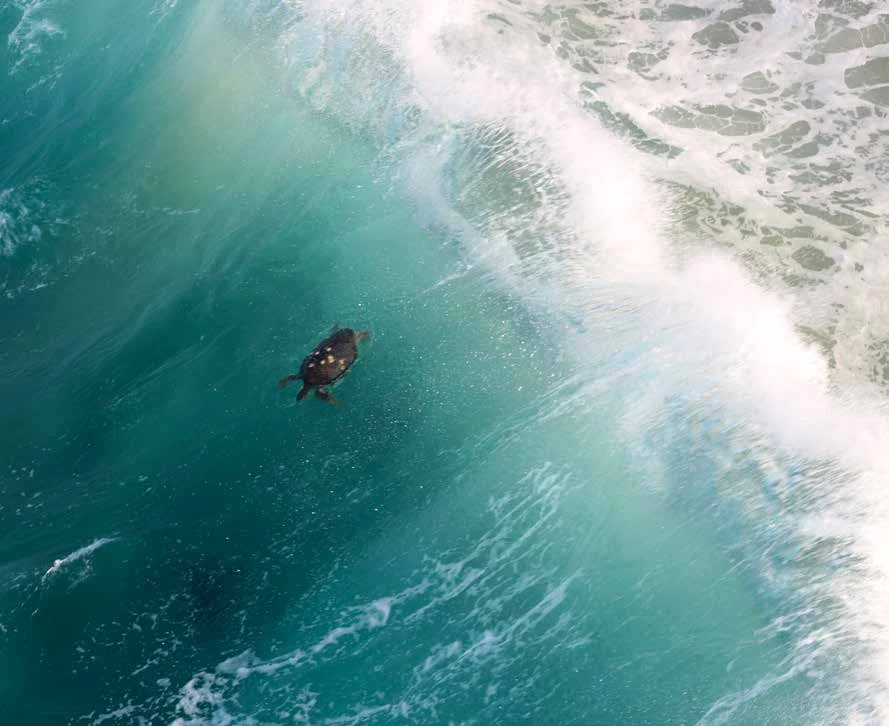Tending to the hundreds of debilitated sea turtles that wash ashore every year is a logistically complex operations that and carries risks for both the turtles and their rescuers. The Sea Turtle Preservation Society (STPS) has developed a set of best practices for transporting disabled turtles while mitigating some of the risks.
Read MoreHarmful algal blooms (HABs) have occurred on Florida’s west coast for centuries, with the first documented report of the HAB known as a red tide in 1844. Although many different organisms can cause HABs, the red tide that commonly affects the Gulf Coast of Florida is caused by a single-celled dinoflagellate known as…
Read MoreAligned along the edge of the western North Atlantic Ocean is the U.S. Atlantic seaboard, a heavily populated region of coastal cities, maritime ports, military bases, and tourist beach destinations that covers more than 25,000 miles of coastline and spans 14 U.S. states from Florida to Maine. It is inevitable that sea turtles and human activities will intersect in the coastal waters and beaches of this highly trafficked zone. This story is about the region’s ongoing programs that Rescue, Rehabilitate, and Release (the three Rs) thousands of sea turtles annually and about the network of dedicated organizations and passionate professionals, volunteers, and public supporters who make it all happen.
Read MoreThe Kemp’s ridley is a signature species for the Gulf of Mexico, and it has become an icon for conservation. Its story includes a long-term international conservation effort, undertaken by Mexico and the United States, which brought the species back from the brink of extinction. A recently completed IUCN Red List assessment not only evaluated the Kemp’s ridley’s current conservation status but also provided a rare glimpse into the history of a critically endangered species prior to its decline.
Read MoreLocated halfway between the resort cities of Acapulco and Puerto Vallarta, the coastline of Michoacán is comparatively quiet and secluded. Broad, sandy beaches here provide ideal nesting habitat for the black sea turtle. The rugged, vast expanse of Mexico’s Pacific coastline is the setting for one of the most inspirational sea turtle conservation success stories of all time.
Read MoreThe East Pacific population of the leatherback is one of the world’s most threatened marine turtle regional management units, due in large part to bycatch of leatherbacks in foraging grounds. There may now be fewer than 1,000 adult females in this population owing to a combination of fisheries bycatch, egg harvesting, and other threats. As such, an expert working group was assembled to develop a 10-year regional action plan to halt and reverse the decline of the East Pacific leatherback turtle.
Read MoreIt is no secret that the Hawaiian green turtle population is recovering. The International Union for Conservation of Nature Red List classified the population as “least concern” in 2012, and the 2015 Endangered Species Act global status review concluded that Hawaii’s population of approximately 4,000 nesting females per year was increasing at a rate of 5.4 percent annually. The success of the Hawaiian green turtle, however, means that local human communities now face some new and unexpected challenges.
Read MoreWhere Cape Cod juts into the Atlantic Ocean from the east coast of the United States, it forms Cape Cod Bay and the southern end of Massachusetts Bay. The area, which bears the grim moniker “the Deadly Bucket,” is the site of the world’s largest recurring sea turtle stranding phenomenon.
Read MoreCosta Rica is a country of ocean, nature, and sea turtle superlatives. Five of the world’s seven species of sea turtles nest on its shores, a number exceeded only by the significantly larger countries of Australia and Mexico.
Read MoreKemp’s ridleys evaded the notice of scientists until the late 1800s. Once discovered, scientists took nearly 100 years to find out where and how they reproduce. In the past five years, an unexplained precipitous population decline has scientists scrambling to solve yet another riddle, one that will determine if the future of this critically endangered species is again in jeopardy.
Read More









